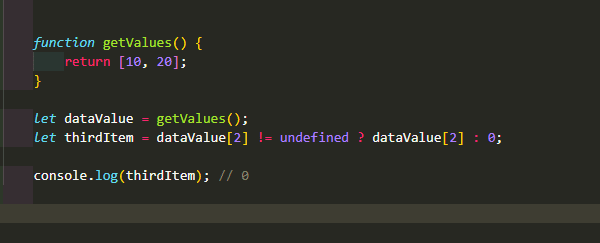Today, We will learn how to use the ES6 destructuring assignment that allows us to destructure an array into individual variables.
ES6 provides a new feature called destructing assignment that allows you to destructure properties of an object or elements of an array into individual variables.
Array destructuring
Let's take an example of a function that returns an array of subject list as follows:
The following invokes the getSubjectList() function and assigns the returned value to a variable:
- Prior to ES6, there was no direct way to assign the elements of the returned array to multiple variables such as x, y and z.
- To get the individual subject to a variable, We need to do like this:
Fortunately, From ES6, We can use the destructing assignment as follows:
The variables x, y and z will take the values of the first, second, and third elements of the returned array.
Note that the square brackets [] look like the array syntax but they are not.
If the getSubjectList() function returns an array of two elements, the third variable will be undefined, like this:
In case the getSubjectList() function returns an array that has more than three elements, the remaining elements are discarded.
For example:
Array "Destructuring Assignment" with "Rest" Parameter
- It’s possible to take all remaining elements of an array and put them in a new array by using the rest syntax (...):
- The variables x and y receive values of the first two elements of the returned array.
- The args variable receives all the remaining arguments, which are the last two elements of the returned array.
Setting default values
For Example:
How it works:
- First, declare the getValues() function that returns an array of two numbers.
- Then, assign the dataValue variable to the returned array of the getValues() function.
- Finally, check if the third element exists in the array. If not, assign the value 0 to the thirdItem variable.
It’ll be simpler with the destructuring assignment with a default value:
If the getData() function doesn’t return an array and you expect an array, the destructing assignment will result in an error.
For example:
Uncaught TypeError: getData is not a function or its return value is not iterable
A typical way to solve this is to fallback the returned value of the getData() function to an empty array like this:
Summary
- The destructuring assignment syntax is a JavaScript expression that makes it possible to unpack values from arrays, or properties from objects, into distinct variables.
- We can set user-defined default values if array has returned null or variable has a undefined.


















Top comments (0)